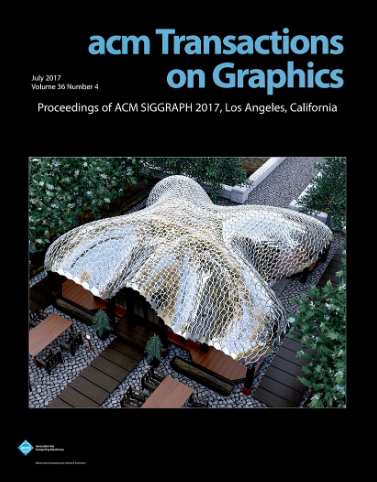Stiff - gipc:改进GPU IPC的刚性仿射变形仿真
IF 9.5
1区 计算机科学
Q1 COMPUTER SCIENCE, SOFTWARE ENGINEERING
引用次数: 0
摘要
增量电位接触(IPC)是一种应用广泛、鲁棒性好、精度高的模拟复杂摩擦接触行为的方法。然而,实现高效率仍然是主要挑战,特别是随着材料刚度的增加,即使使用最先进的预调节器,也会导致预条件共轭梯度(PCG)收敛速度变慢。在本文中,我们提出了一个完全GPU优化的IPC仿真框架,能够处理各种刚度的材料,提供一致的高性能和可扩展性,比最先进的GPU IPC方法加速高达10倍。我们的框架引入了三个关键创新:1)GPU上的新型连接增强多层加性施瓦茨(MAS)预调节器,旨在有效捕获硬弹性动力学和软弹性动力学,并在降低预调节器成本的情况下提高PCG收敛性。2)具有非精确应变限制的解析特征系统的c2 -连续立方能,使刚性膜(如布)在没有膜锁定的情况下能够更加并行友好地模拟。3)对于弹性波几乎不可见的极端刚性行为,我们采用仿射体动力学(ABD)和基于哈希的两级约简策略来实现快速Hessian装配和有效的仿射-变形耦合。我们进行广泛的性能分析和基准研究,将我们的框架与最先进的方法和其他设计选择进行比较。我们的系统在软、硬和混合模拟场景中始终如一地提供最快的性能,即使在高分辨率、大变形和高速冲击的情况下也是如此。本文章由计算机程序翻译,如有差异,请以英文原文为准。
StiffGIPC: Advancing GPU IPC for Stiff Affine-Deformable Simulation
Incremental Potential Contact (IPC) is a widely used, robust, and accurate method for simulating complex frictional contact behaviors. However, achieving high efficiency remains a major challenge, particularly as material stiffness increases, which leads to slower Preconditioned Conjugate Gradient (PCG) convergence, even with the state-of-the-art preconditioners. In this paper, we propose a fully GPU-optimized IPC simulation framework capable of handling materials across a wide range of stiffnesses, delivering consistent high performance and scalability with up to 10 × speedup over state-of-the-art GPU IPC methods. Our framework introduces three key innovations: 1) A novel connectivity-enhanced Multilevel Additive Schwarz (MAS) preconditioner on the GPU, designed to efficiently capture both stiff and soft elastodynamics and improve PCG convergence at a reduced preconditioning cost. 2) A C 2 -continuous cubic energy with an analytic eigensystem for inexact strain limiting, enabling more parallel-friendly simulations of stiff membranes, such as cloth, without membrane locking. 3) For extremely stiff behaviors where elastic waves are barely visible, we employ affine body dynamics (ABD) with a hash-based two-level reduction strategy for fast Hessian assembly and efficient affine-deformable coupling. We conduct extensive performance analyses and benchmark studies to compare our framework against state-of-the-art methods and alternative design choices. Our system consistently delivers the fastest performance across soft, stiff, and hybrid simulation scenarios, even in cases with high resolution, large deformations, and high-speed impacts.
求助全文
通过发布文献求助,成功后即可免费获取论文全文。
去求助
来源期刊

ACM Transactions on Graphics
工程技术-计算机:软件工程
CiteScore
14.30
自引率
25.80%
发文量
193
审稿时长
12 months
期刊介绍:
ACM Transactions on Graphics (TOG) is a peer-reviewed scientific journal that aims to disseminate the latest findings of note in the field of computer graphics. It has been published since 1982 by the Association for Computing Machinery. Starting in 2003, all papers accepted for presentation at the annual SIGGRAPH conference are printed in a special summer issue of the journal.
 求助内容:
求助内容: 应助结果提醒方式:
应助结果提醒方式:


